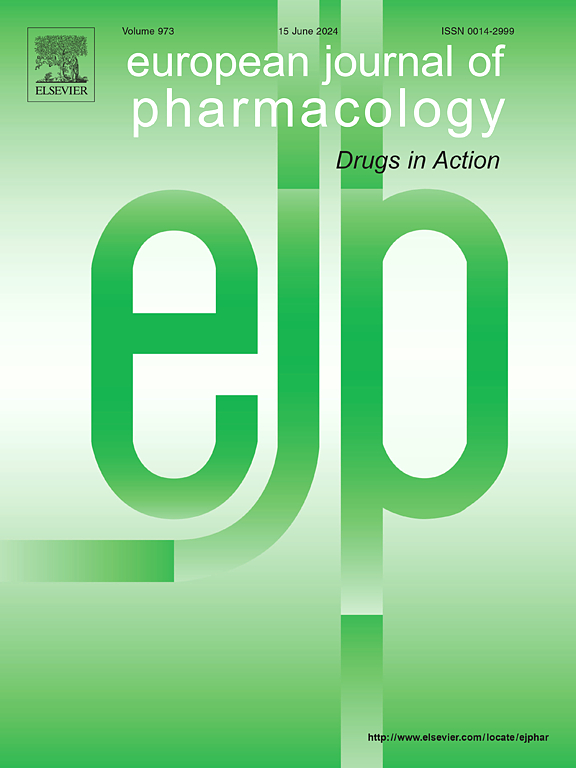Microglia modulate integrity of myelin and proliferation of oligodendrocyte precursor cells in murine model of bone cancer pain
IF 4.2
3区 医学
Q1 PHARMACOLOGY & PHARMACY
引用次数: 0
Abstract
Cancer pain, a frequent complication in patients with cancer, adversely affects quality of life and survival rates. Microglia promote nociceptive information transmission by modulating myelin integrity during pain perception. However, the specific mechanisms by which microglia regulate myelin in the context of cancer pain remain poorly understood. In this study, we developed a bone cancer pain model to examine the interactions among microglia, myelin, and oligodendrocyte precursor cells and their roles in cancer pain. Our study found that mice with bone cancer pain had oligodendrocyte differentiation defects and myelin loss, and that promoting myelination did not relieve pain. In addition, we observed that reactive microglia and inflammatory cytokines increased and microglia phagocytosed myelin in mice with bone cancer pain. Inhibition of microglia not only alleviated pain behaviors in mice with bone cancer but also mitigated myelin phagocytosis and the proliferation of oligodendrocyte precursor cells. Our study suggests that microglia-mediated myelin loss and oligodendrocyte precursor cell proliferation may be one of the pathological mechanisms underlying pain in mice with bone cancer.

小胶质细胞调节骨癌疼痛小鼠模型中髓磷脂的完整性和少突胶质前体细胞的增殖。
癌痛是癌症患者经常出现的一种并发症,对生活质量和存活率产生不利影响。小胶质细胞通过调节疼痛感知过程中的髓鞘完整性来促进痛觉信息的传递。然而,人们对小胶质细胞在癌痛中调节髓鞘的具体机制仍知之甚少。在这项研究中,我们建立了一个骨癌痛模型来研究小胶质细胞、髓鞘和少突胶质前体细胞之间的相互作用及其在癌痛中的作用。我们的研究发现,骨癌疼痛小鼠存在少突胶质细胞分化缺陷和髓鞘缺失,而促进髓鞘化并不能缓解疼痛。此外,我们还观察到,骨癌疼痛小鼠的反应性小胶质细胞和炎性细胞因子增加,小胶质细胞吞噬髓鞘。抑制小胶质细胞不仅能缓解骨癌小鼠的疼痛行为,还能减轻髓鞘吞噬作用和少突胶质前体细胞的增殖。我们的研究表明,小胶质细胞介导的髓鞘丢失和少突胶质前体细胞增殖可能是骨癌小鼠疼痛的病理机制之一。
本文章由计算机程序翻译,如有差异,请以英文原文为准。
求助全文
约1分钟内获得全文
求助全文
来源期刊
CiteScore
9.00
自引率
0.00%
发文量
572
审稿时长
34 days
期刊介绍:
The European Journal of Pharmacology publishes research papers covering all aspects of experimental pharmacology with focus on the mechanism of action of structurally identified compounds affecting biological systems.
The scope includes:
Behavioural pharmacology
Neuropharmacology and analgesia
Cardiovascular pharmacology
Pulmonary, gastrointestinal and urogenital pharmacology
Endocrine pharmacology
Immunopharmacology and inflammation
Molecular and cellular pharmacology
Regenerative pharmacology
Biologicals and biotherapeutics
Translational pharmacology
Nutriceutical pharmacology.

 求助内容:
求助内容: 应助结果提醒方式:
应助结果提醒方式:


